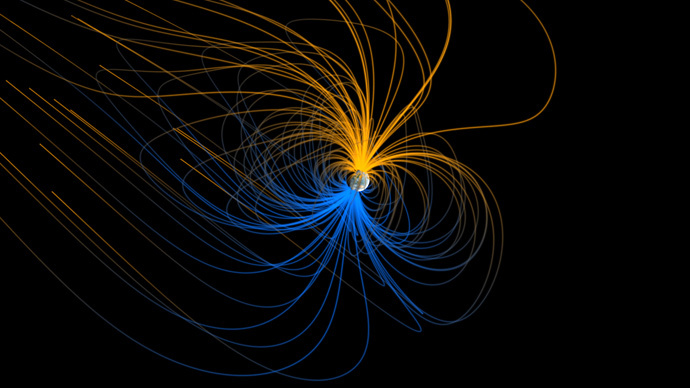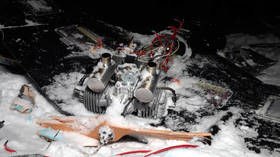Worm’s-eye view: Scientists find first-ever animal sensor detecting Earth's magnetic field

For a long time, scientists knew that some animals can detect the Earth’s magnetic field, but they could not explain how. Researchers finally managed to find the first animal magnetic sensor – in a tiny worm.
Many creatures – from bacteria to animals – navigate by feeling the magnetic field of the Earth. That is how homing pigeons can find their way home, despite being hundreds of miles away. Until today, however, scientists could not understand the exact mechanism.
A group of scientists at the University of Texas at Austin have been observing worms called C. elegans in labs all over the world and concluded that these small animals have so-called magnetoception – a sense that allows them to detect a magnetic field. The next step was to find a receptor of this sense, which could be the key to solve one of the deepest mysteries in zoology.
What they found was a microscopic structure at the end of a so-called AFD neuron which looks like a very small TV-antenna which handles signals from magnetic fields. This neuron was previously known to scientists as a sensor of carbon dioxide levels and temperature.
READ MORE: Scientists: North can become South in less than 100 years
The scientists first discovered that hungry worms in gelatin-filled tubes usually move down into the Earth in the US, trying to look for food. But when the same experiments were conducted in other parts of the world it turned out that the worms did not tend to move downward elsewhere. They moved at a precise angle to the magnetic field that was equivalent to moving down in the US. For example, in Australia, the worms moved upward.
Scientists then changed the magnetic field around the worms with a special magnetic coil system, which confirmed the hypothesis that C. elegans have a sense of magnetic field.
This discovery was important in itself – it proved that soil animals can have magnetoception as well as terrestrials. "I'm fascinated by the prospect that magnetic detection could be widespread across soil dwelling organisms," said Andrés Vidal-Gadea, the study's lead author.
The following experiments showed that C. elegans worms with genetically broken AFD neurons could not orient like normal ones. This may become a breakthrough in biology, as other animals orienting with the help of magnetism can have the same mechanism of magnetoception.
"Chances are that the same molecules will be used by cuter animals like butterflies and birds. This gives us a first foothold in understanding magnetosensation in other animals," said Jon Pierce-Shimomura, assistant professor of neuroscience in the College of Natural Sciences and a member of the research team.
READ MORE: ‘Star Trek-like shields’: New radiation belt protects Earth from ‘killer electrons’
It is not the first research devoted to animals’ magnetoception but the previous ones either concentrated on whether a specific species has this sense, or failed to find how it works.
In 2012 a team from Baylor College of Medicine announced the discovery of special brain cells in pigeons that process information about magnetic fields, and tried to find the sensor in the inner ears of the birds.
"It's been a competitive race to find the first magnetosensory neuron," Pierce-Shimomura said. "And we think we've won with worms, which is a big surprise because no one suspected that worms could sense the Earth's magnetic field."












